How are marstall pellets produced?
Pellets are an important component of our marstall mueslis, for example marstall Complete or marstall Freizeit. What they are made of is shown on our packaging. But how do we produce our pellets? Here you can take a look behind the scenes with us.
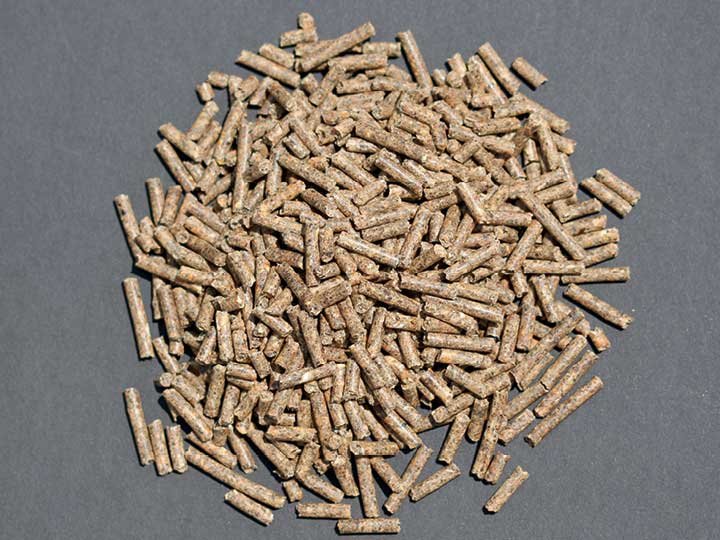
The finished pellets are uniform in size and thicker or thinner depending on the intended use.
Depending on the purpose of the pellets, they contain up to 20 different ingredients, for example marstall Nutri-Pellet: It is offered as an alternative to a classic muesli. The pellets contain cereals such as barley, wheat, corn, dried apple pomace, beet molasses and brewer's yeast.
The production of cereal flakes is a separate process. We also produce these ourselves in our facilities.
At the inspection of the raw materials
The pellet production at marstall starts with the control of the raw materials. Directly at delivery our employees search for possible impurities such as foreign particles, insects or grains. Random samples are sifted out by hand and further samples are taken for the laboratory. We also create reserve samples - we keep samples of the raw material batches.
While the samples which are taken directly upon delivery are examined, the coarse raw materials are placed in the silo first.
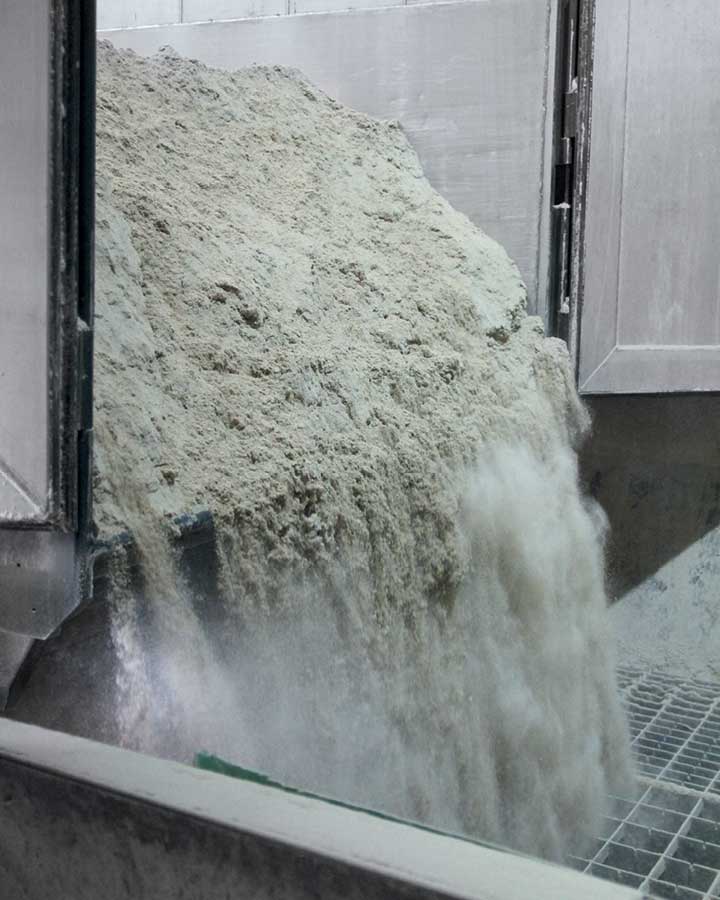
After initial tests, the coarse raw materials are directly entered into the silo cells.
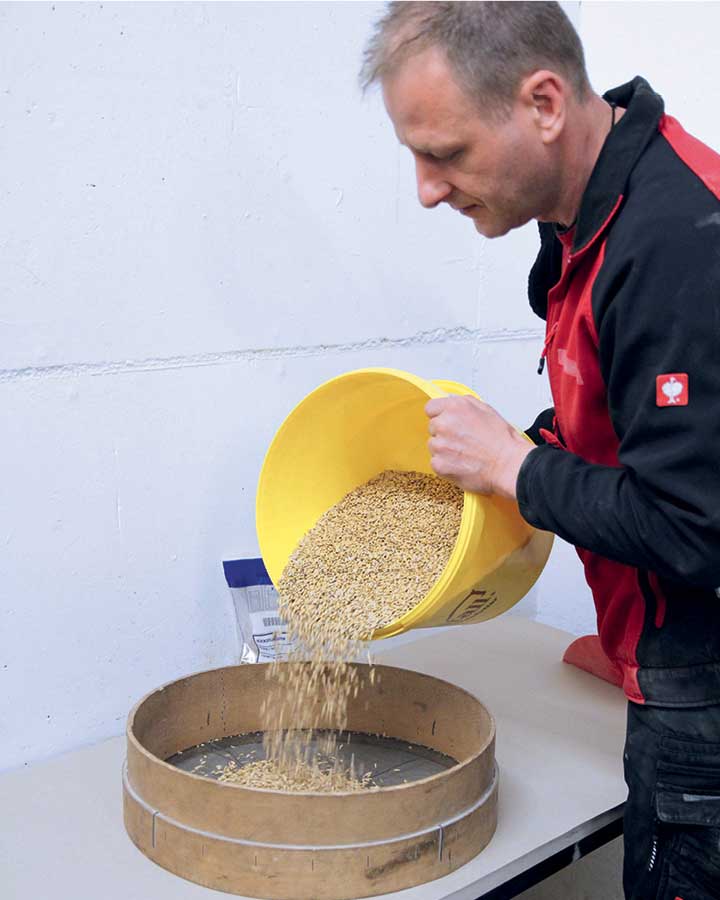
A colleague sifts out a sample of the raw material.
In the hammer mill
Coarse raw materials such as maize and beet pulp are directly transferred from the various silos to different scales. These weigh the quantity required in accordance with the recipe fully automatically. The raw materials are then grinded very finely, as this is the only way they can later be pressed into a pellet.
The grinding is done by the so-called hammer mill, which consists of many beaters and a sieve jacket with sieve holes. The beaters throw the coarse raw materials against the sieve jacket until the pieces are so small that they fall through the sieve holes. This ensures that no larger pieces get into a pellet. This makes our pellets particularly stable.
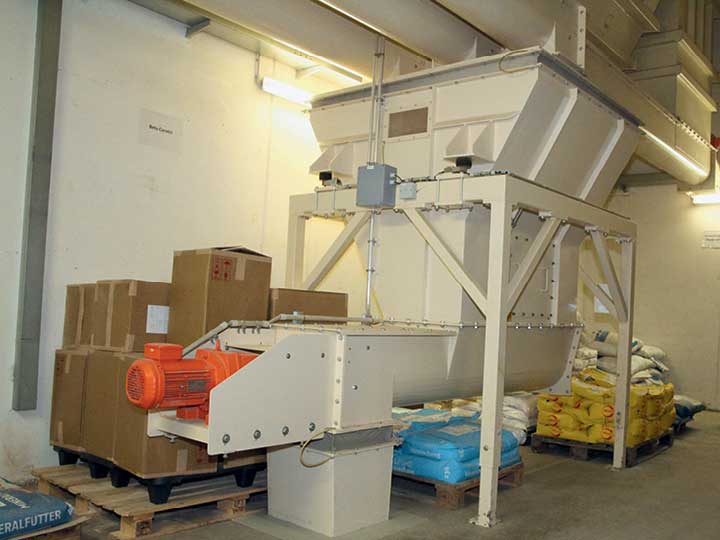
Scales under the silos automatically weigh the coarse ingredients for the pellets.
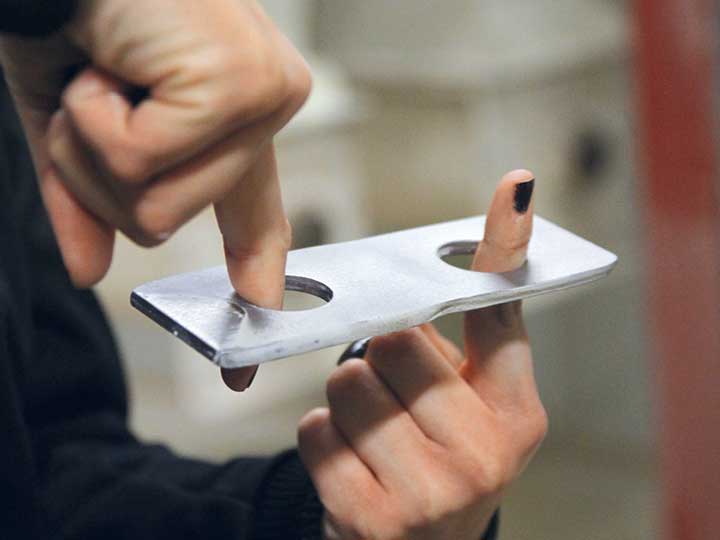
The metal beaters rotate and thus spin the coarse raw materials onto a sieve jacket for crushing.
In the mixer: minerals, vitamins, trace elements
Pellets have two main areas of application for us: They are used to add important minerals, trace elements and vitamins to the muesli or are offered as supplementary feed for special needs. As the exact dosage of the ingredients is therefore particularly important, the minerals, trace elements and vitamins are all weighed by hand. Our colleague can also carry out a sensory test of the raw materials - i.e. evaluate their visual appearance and smell.
The minerals, trace elements and vitamins are then added to the mixer together with the ingredients crushed in the hammer mill. This is done with the help of air pressure so that no residues remain in the pipes on the way between the scales and the mixer. Finally, all ingredients and additives are in the mixer.
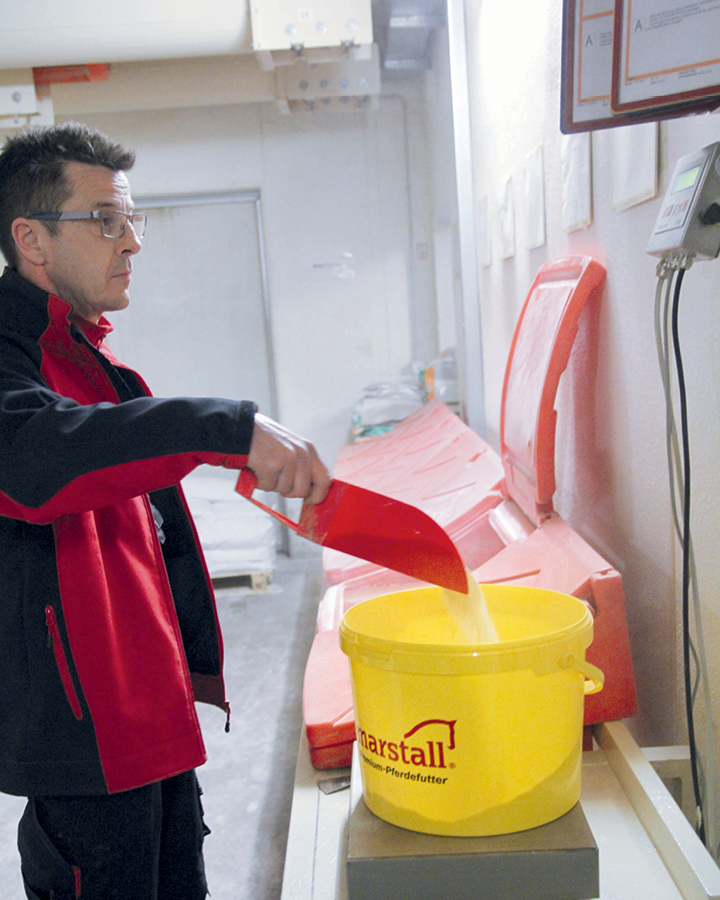
Our colleague weighs the exact amount of minerals, trace elements and vitamins for the pellets by hand.
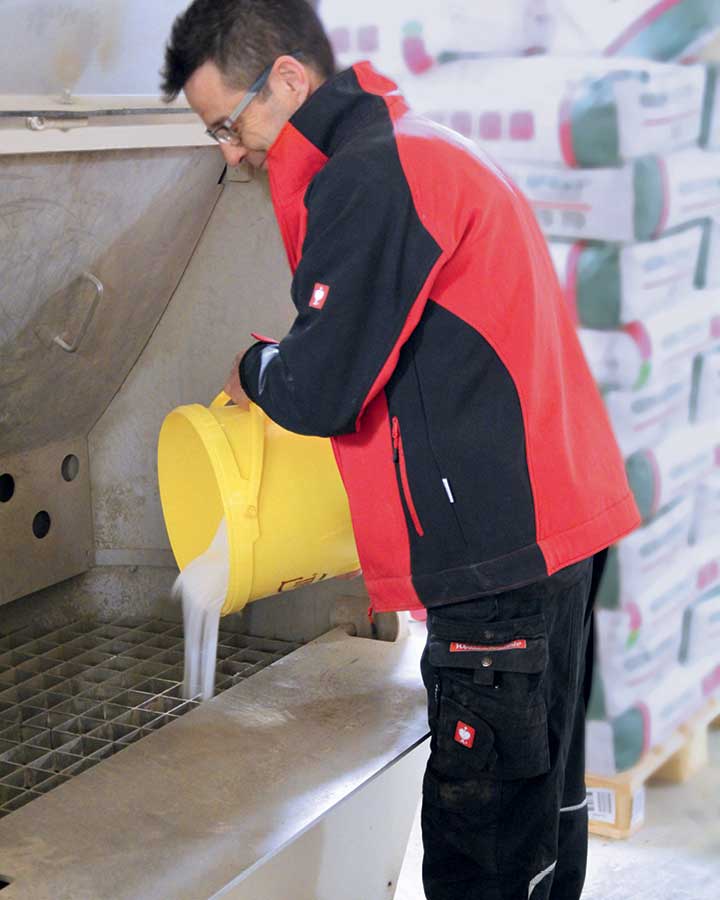
The weighed ingredients are poured into a basin. From there they are transferred to the mixer by air pressure.
From the mixer and into the pellet press
The mixer stirs the ingredients until a homogenous, in other words uniform mass is produced. Depending on the recipe, this can take up to five minutes. Only by mixing everything evenly we can make sure that each pellet contains the same amount of all ingredients.
From the mixer the pellets pass through pipes into the press. In order to enable the pressing of pellets at all, the mass is heated with steam. In the technical language this is called "hygienizing". Some pellets have molasses added to them, because in some recipes the pellets would otherwise fall apart. Moreover, they simply taste better when molasses is added.
The mixture is then pressed into pellets by forcing the hot mass through a perforated die. The pellet now has its shape, but is still hot.
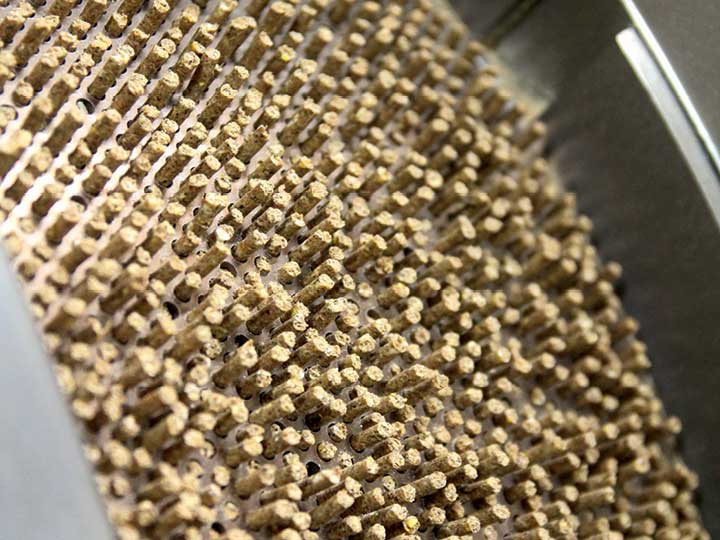
The press forces the hot mass through a perforated die. This gives the pellets their shape.
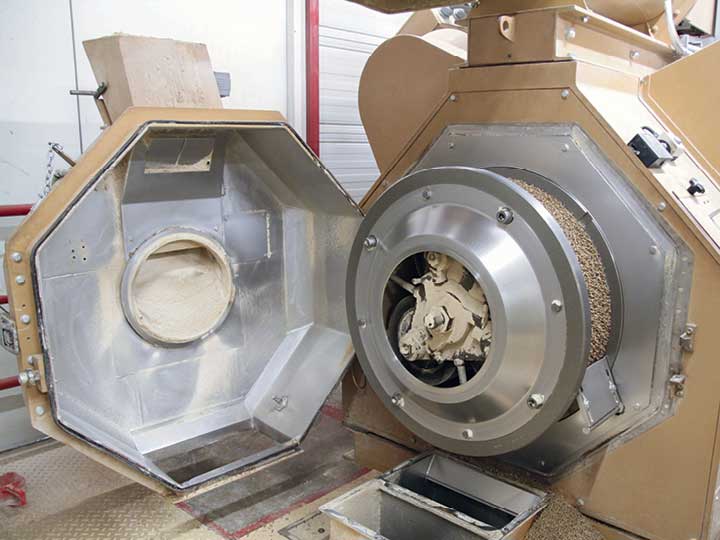
The pellet press resembles a huge laundry drum with a drive in the middle and holes in the drum.
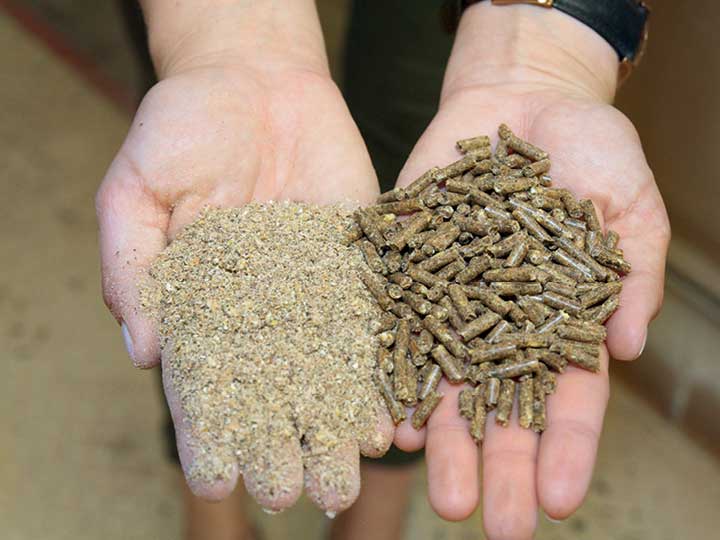
Powder is turned into pellets with the help of steam, heat and pressure.
Cool, dry, sieve - done!
The hot pellets fall into the cooler after pressing. Here they are cooled with air. At the same time, moisture is removed by the air. This makes the pellets durable and stable in shape.
The finished pellets are sieved to remove the tiny pieces that have broken off during pressing. They are then stored in silos and wait there until they are either filled directly or added to a muesli, depending on the recipe.

The finished pellets are of a uniform size and thicker or thinner depending on the intended use.
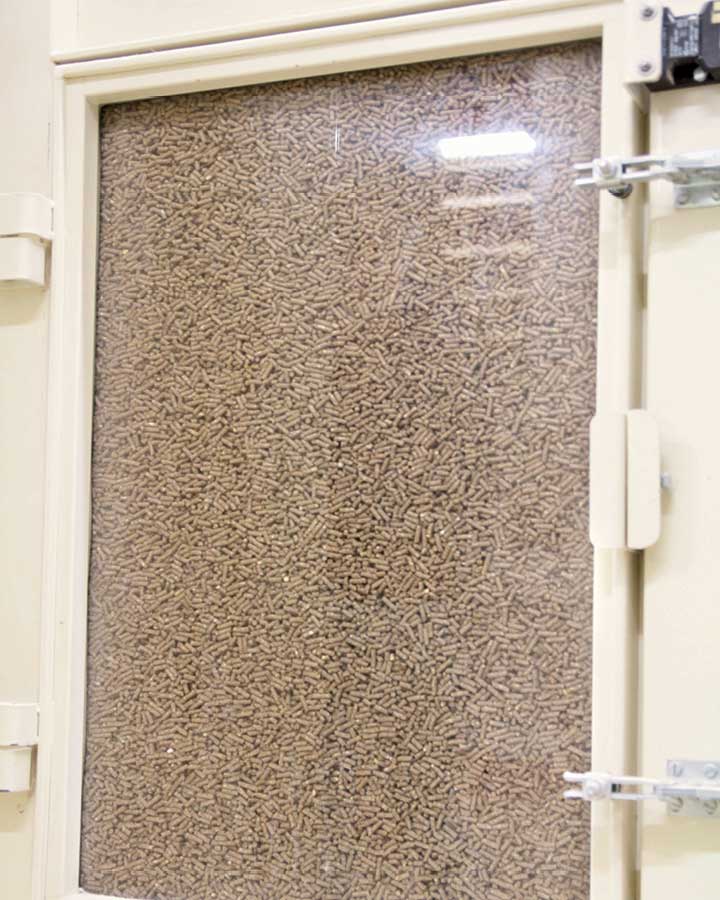
As the pellets gradually sink to the bottom of the cooler, an air stream slowly cools them down and removes moisture from them.
We hope you enjoyed the look behind the scenes of our production.

